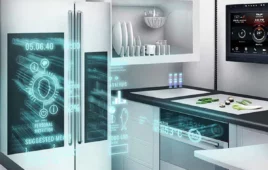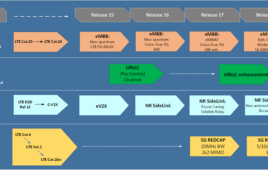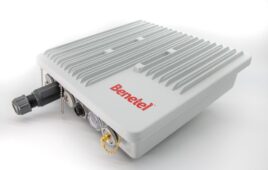To extend their capabilities, cell phones increasingly feature three radios: Bluetooth, GPS and FM. Often implemented using separate chips, these radios increase the cost and size of the handset. Next-generation phones are more likely to use combo chips that combine two, or even all three, of these functions.
|
Three vendors are sampling chips that combine Bluetooth, GPS and FM transmit/receive. The chips include the Broadcom BCM2075, CSR BlueCore7 and Texas Instruments NaviLink 6.0. These chips will help handset designers save money, but require compromises that must be considered.
ATTACH RATES RISE RAPIDLY
Worldwide, the attach rate of Bluetooth was about 56 percent last year, according to data from The Linley Group. FM radio appeared in 38 percent of all phones, while GPS lagged at 18 percent. GPS is becoming widespread in the United States, however, due to E911 requirements and the popularity of navigation and other location-based services. The Linley Group forecasts that the worldwide GPS attach rate will exceed 50 percent by 2011.
One reason handset makers have been slow to adopt these new features, particularly GPS, has been their cost. Despite price declines, the cost of adding GPS using a discrete chip is between $4 and $6, including the cost of the chip and the cost of required external components (antenna, amplifiers).
These components also consume precious board area. For example, a GPS subsystem based on the popular Infineon Hammerhead device requires at least 50mm2 of board area.
Standalone Bluetooth and FM chips are less expensive but still require considerable board area. A state-of-the-art discrete Bluetooth device, such as Broadcom’s BCM2046, requires about 50mm2. An FM subsystem based on Silicon Labs’ Si4721, which includes FM transmit and RDS functions, requires only 15mm2 but adds $5 to $6 in cost.
COMBO CHIPS CUT COST
The cost savings of integration can be significant. Using a combo chip, the incremental cost (compared to standalone Bluetooth) of adding full FM capabilities will be less than $1. GPS will add about another $1 to $3 to the system cost. Thus, for these two functions, the total cost savings can be as much as $10 compared to current solutions.
Board area savings are also impressive. Broadcom claims a board area of just 50mm2 for the BCM2075 to implement all three functions. This is less than half the area required for solutions combining the single-function BCM2046, Si4721 and Hammerhead chips.
A three-chip design also requires integrating chips from multiple vendors, creating potential hardware and software problems. A combo chip comes with a reference hardware design and software from the chip vendor that eases integration issues.
A COMPROMISING SITUATION?
When handset makers select chips individually, they have the option to choose best-of-breed products for each of the three radio functions. Though a combo chip provides all three functions together, it presents a “take it or leave it” approach that can result in compromises.
Broadcom, CSR and TI are the three leading vendors of Bluetooth, so no compromise is needed. FM implementation is straightforward and is similar among combo chips. Significant compromises, however, can occur with GPS.
CSR, for example, uses a “software” GPS design. Instead of providing a separate radio input for GPS, this design leverages the Bluetooth RF chain. It also loads much of the computation onto the main CPU, instead of an internal DSP.
These measures reduce the cost of CSR’s GPS solution but impair performance. The chip’s rated accuracy is about five times worse than that of most standalone GPS chips. Using the main CPU for computation can also reduce battery life. Thus, the CSR combo chip is best for handsets that require only an occasional position fix.
TI has disclosed few details about the design or performance of its GPS technology, making it difficult to assess. Although the company has offered GPS chips for several years, its only handset customer is Nokia, which uses its own GPS software. Customers contemplating the TI chip may not achieve competitive GPS performance without significant software development.
Broadcom’s combo chip uses GPS technology it acquired from Global Locate, which also provides the technology for the widely used Hammerhead chip. The BCM2075 is quite accurate and offloads the GPS computation from the main CPU, making it well-suited to applications, such as navigation, that require continuous position computation.
The drawback to Broadcom’s solution is that it is, of course, the most expensive. It is also the latest of the three chips to sample.
Although some compromises may be required, combo chips offer exceptional cost savings for handsets due to reach stores next year. The low incremental cost of FM and GPS will make them ubiquitous in next year’s feature phones.
Gwennap is founder and principal analyst of The Linley Group and coauthor of “A Guide to Mobile Connectivity.”





